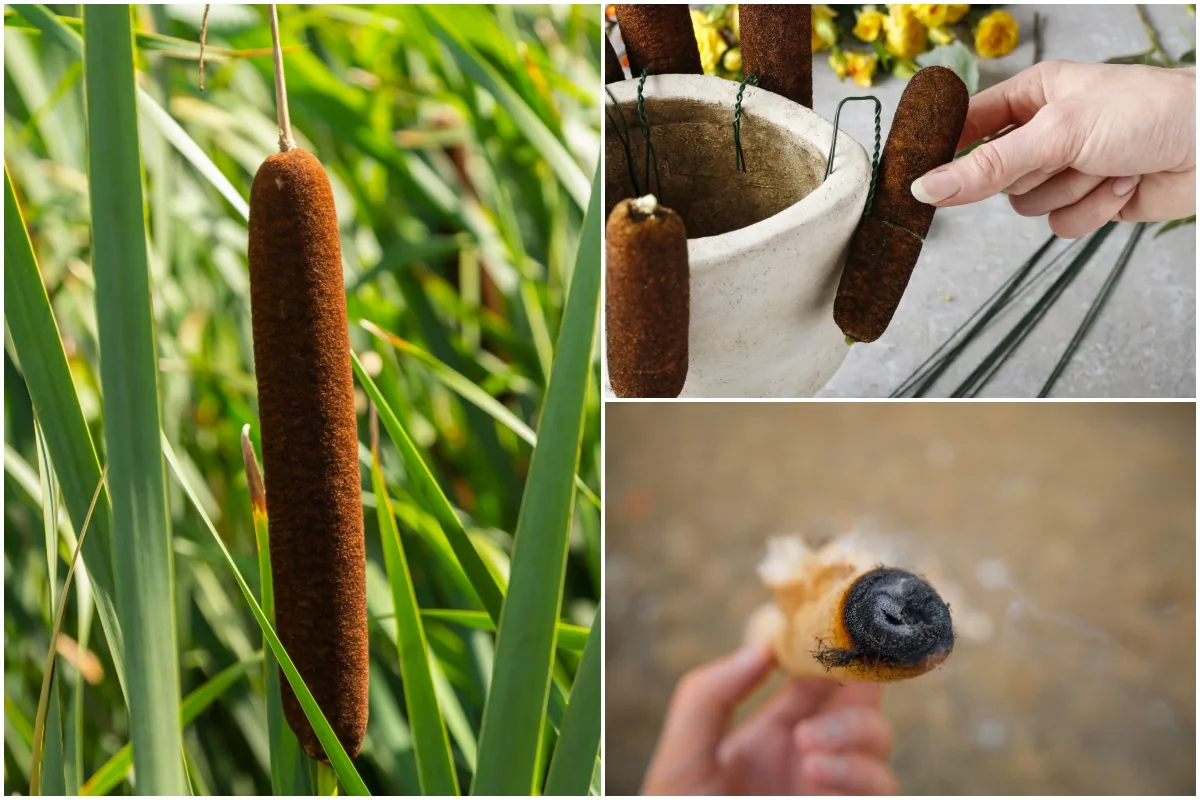
Where fresh water meets land, the cattail stands tall, its cylindrical seedheads and upright sword-like leaves lightly swaying in the breeze. Cattails are so ubiquitous to water that it’s quite impossible to picture a pond or river edge without them.
Cattails might be one of the most familiar wetland denizens, but that doesn’t make them any less remarkable. More than a pond feature, cattails are year-round sources of food, building materials, crafting supplies, and medicine.
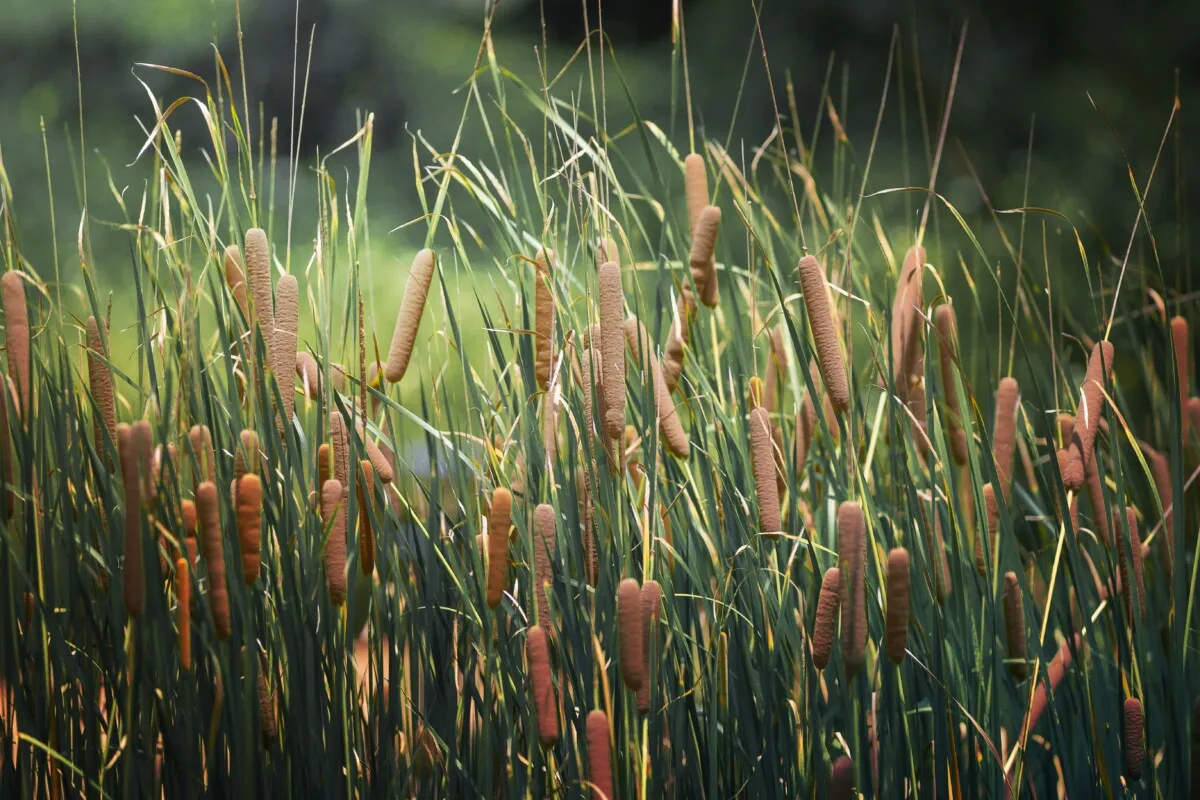
Wherever there is shallow water, you’ll find cattails growing.
Cattails – also called reeds or bulrushes – are easy to spot thanks to their prominent brown sausage-shaped flowerheads.
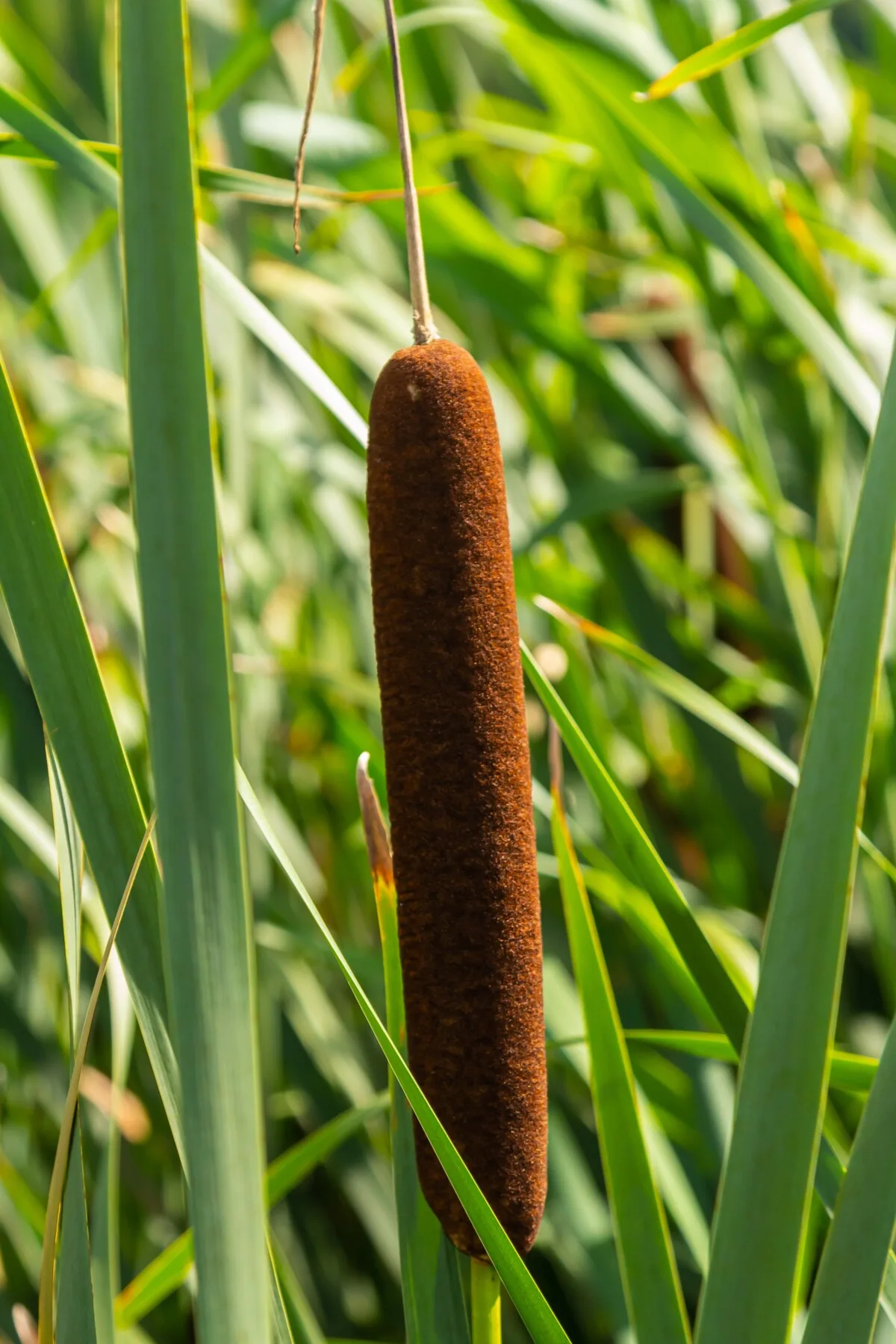
You’ll find cattails in wet meadows, marshes and fens, in roadside ditches, along the margins of ponds and lakes, skirting river and stream backwaters, irrigation canals, and oxbow lakes. Typically, cattails grow in any fresh or slightly brackish bodies of water where the depth doesn’t exceed 2.6 feet.
These semi-aquatic perennials enjoy a range of climates. Cattails flourish equally in tropical, subtropical, temperate, humid coastal, and dry continental environments, at elevations from sea level to 9,600 feet.
Cattails are all over the place, and sometimes that’s a problem.
There are three species of cattail you’re apt to see padding our shorelines:
Broadleaf cattail (Typha latifolia) is a far-flung cosmopolitan species, native to North and South America, Eurasia, and Africa. As the name suggests, it has larger leaves that grow 0.75 to 1.5 inches wide.
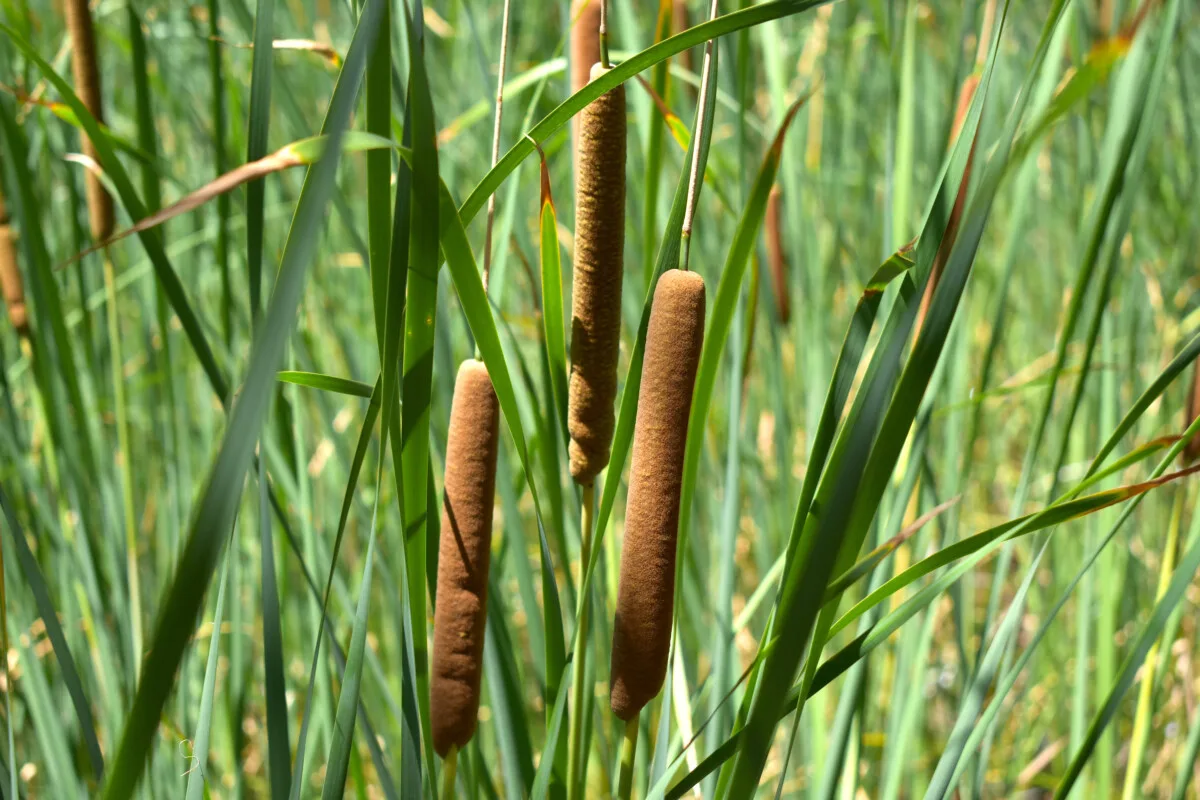
An essential plant for healthy riparian ecosystems, broadleaf cattails lives in the narrow strip where shallow water gradually transitions to dry land. It stabilizes the shoreline and prevents erosion, filters pollutants from the water, and supports a vast number of wetland species. Insects, fish, reptiles, waterfowl, marsh birds, beavers, muskrats, elk, and deer rely on it for food, shelter, nesting, brooding, and cover.
Narrowleaf cattail (Typha angustifolia) is an introduced species from Europe with a range that overlaps broadleaf cattail. It looks nearly identical to native cattail, but can be identified by its slimmer leaves that grow to only 0.25 to 0.5 inch wide.
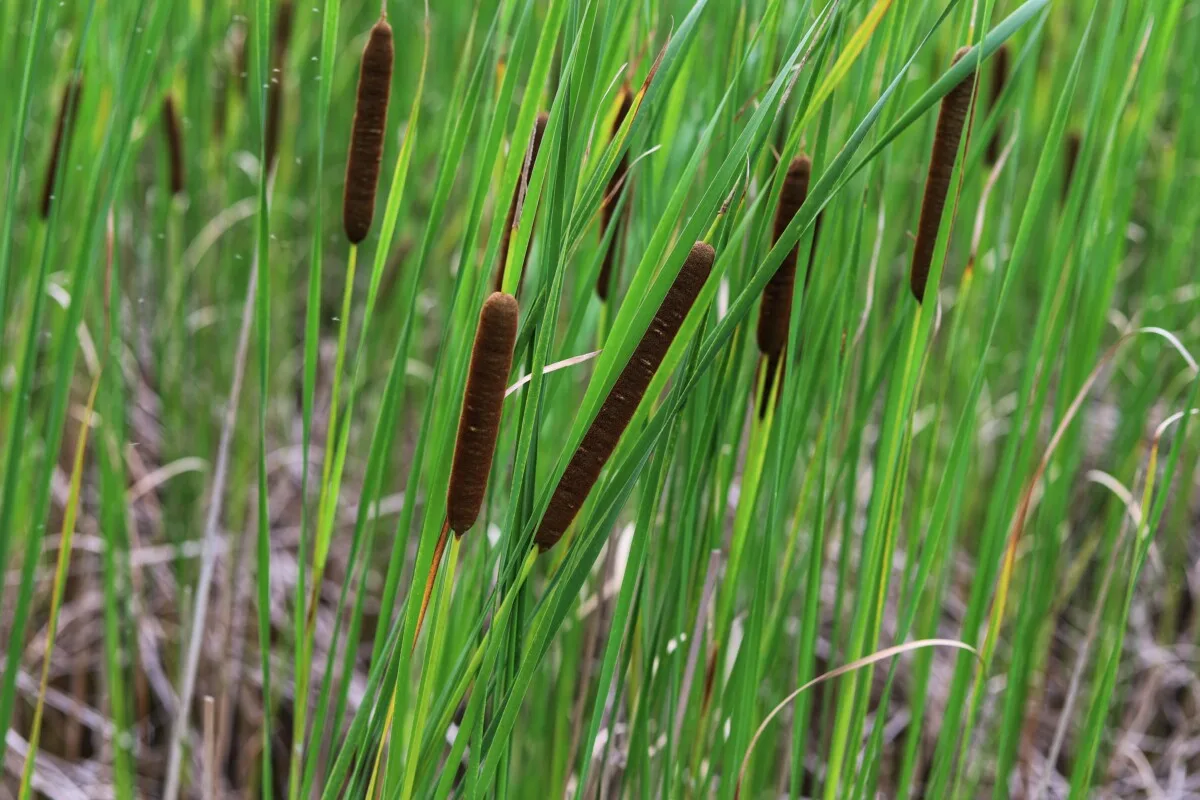
Growing aggressively along shores and in free-floating mats, narrowleaf cattail is very invasive in our wetland environments. It forms stands so dense that it crowds and outcompetes native plants, impacting food sources and habitats for birds, butterflies, fish, and other wetland creatures. When narrowleaf and broadleaf cattails share a habitat, they cross-pollinate and create hybrid cattail.
Hybrid cattail (Typha x glauca), sometimes called white cattail, is extremely invasive and easily outcompetes both its parents for space and resources. Although hybrid cattail seeds are sterile, it spreads aggressively through creeping rhizomes that make it very difficult to eradicate once established.
It’s not easy to distinguish hybrid cattail from its parents, as it may inherit traits from either one. Some hybrid cattail will have narrow leaves and others will have broad leaves. One notable feature of invasive cattail species is the large and dense monocultures they form. Broadleaf cattail stands, by comparison, are typically smaller and looser, with neighboring vegetation such as cordgrasses, sedges, and milkweeds, growing in and around them.
Because cattails are so prolific, they are easy to find and forage.
Looking for wild cattails is an opportunity to explore your local water systems and wetlands, which are some of the most beautiful and important ecosystems on Earth. When foraging, try to target cattails with narrow leaves and those in spreading, dense monocultures. It’s muddy work, so wear some rubber boots!
As you’ll soon see, cattails are excellent providers. There’s no part of the cattail that doesn’t serve a function of some kind.
Culinary Cattail
The culinary uses of cattails are so broad that it was once referred to as the “supermarket of swamps”.
For centuries, Native Americans utilized cattails in every season – including winter – as a nutritious source of food. Although the entire plant is edible, the cattail shoots, flowers, rhizomes, and pollen are the choicest bits.
On the surface, cattail may not look particularly appetizing but these plants are surprisingly protein-rich and filling. It’s not bland subsistence fare, either. When cattails are harvested at the right time of year, they have a delightfully unique flavor profile.
When seeking out cattails, only harvest plants from clean water sources. As bio-accumulators, cattails are living water filters that absorb pollutants and toxins into their roots and leaves. When collecting cattails for food, stay away from the ones growing near buildings, roads, and drainage ditches.
1. Cattail Shoots in Early Spring
From early spring to early summer, cattail shoots are good for the eating. For the best texture and flavor, harvest cattail shoots before begin to flower.
The young and tender inner core, stripped of the outer leaves, can be eaten raw in salads or sautéed with other veggies. The peeled shoots are white and taste like a cross between cucumber and green beans. Nutritionally, cattail shoots are a good source of protein, fiber, calcium, potassium, magnesium, and vitamin A.
Eat them while they’re fresh, or pickle your cattail shoots to enjoy later.
2. Immature Cattail Flowers in Late Spring
Starting in late spring, the cattail flower stalks emerge from the cluster of leaves. As monoecious plants, each floral spike has distinct male and female flowers that develop into dense racemes.
Separated by a small gap, the upper portion is the male part that will eventually shed pollen; the lower cylinder comprises the tightly-packed female flowers that will become a dark brown, cigar-shaped flowerhead once it’s pollinated.
Biting into a mature cattail flower will leave you with a mouthful of seeds and fluff – so don’t do that. Long before pollination, both male and female cattail flowers can be boiled, steamed, or fried and eaten like corn on the cob.
Timing the cattail flower harvest is key. Pick the flowerheads when they are still green and covered in their protective sheaths to enjoy the most tender cat-cobs.
3. Cattail Pollen in Early to Mid-Summer
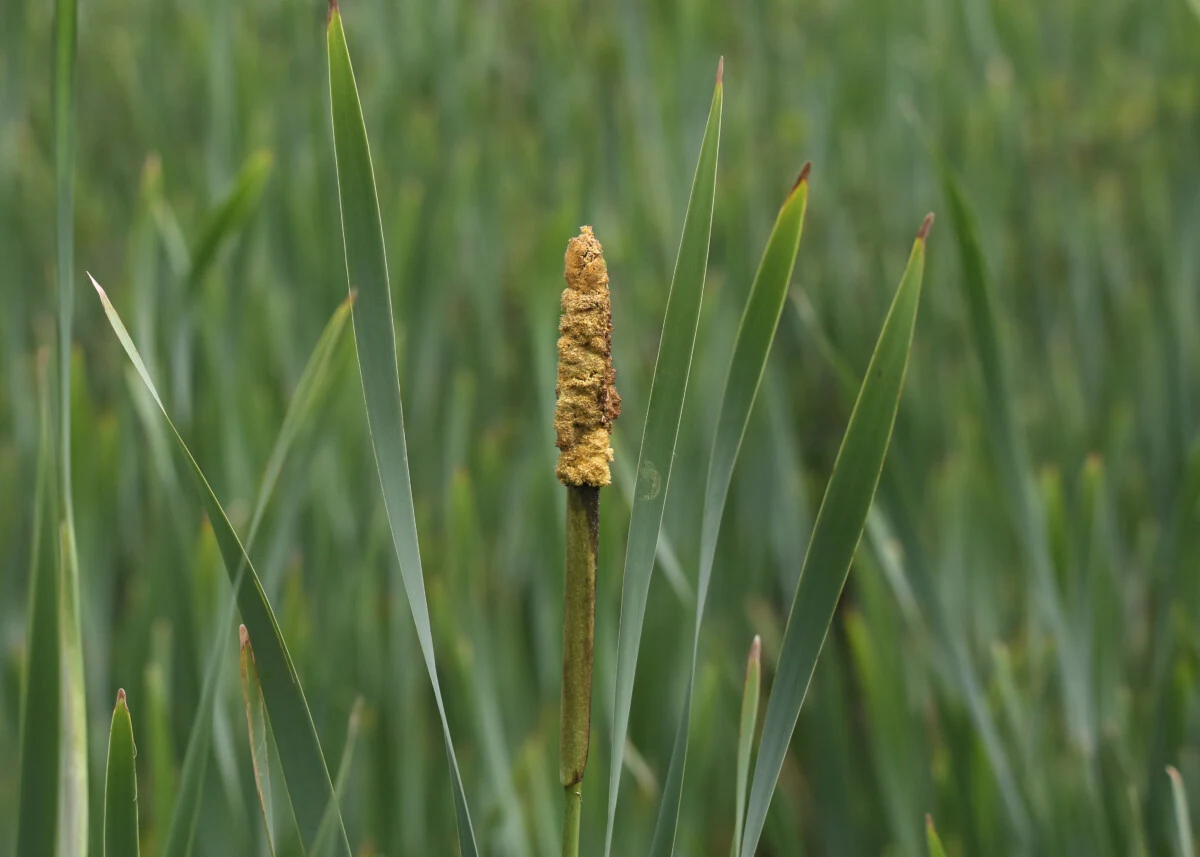
As the cattail inflorescence continues to grow and swell in size, the upper male cylinder will develop into thousands of individual florets, each with a pair of hairy stamens. It gives the top of the spike a fuzzy-looking texture. In contrast with the still-green female flowerhead below, the male flowers turn a golden yellow color as the tiny florets shed pollen.
Cattail flowerheads are rather generous with pollen, and each one produces a lot of it:
The window for harvesting cattail pollen is only about a week – usually toward the end of June. Collect cattail pollen by tapping the flower spike into a paper bag. Sift out the chaff with a fine-mesh strainer and transfer the pollen into a glass jar.
Cattail pollen has a nutty and slightly sweet flavor that goes superbly in baked goods. Try replacing half the flour with cattail pollen in your favorite bread, cookie, muffin, or pancake recipe.
4. Cattail Roots from Fall through Winter
Submerged in the mud beneath the water’s surface are the cattail roots. These are thick and fibrous rhizomes that grow horizontally underground, storing nutrients and giving rise to new shoots in spring.
Cattail rhizomes can be harvested at any time of year but have the best flavor in autumn and winter, after plants have flowered and gone to seed.
To find the rhizome, follow the main stem down and feel around in the mud for roots that are 1 to 1.5 inches around. Loosen the soil around the rhizome and pull it up. Peel away the outer skin and fibers until you reach the white inner core.
Cattails belong to the order Poales in the plant kingdom, a family of grasses that include important dietary staples such as wheat, corn, rice, and barley. Like these foods, cattail rhizomes are loaded with starchy carbohydrates and are an energy-rich fuel. They have a mildly sweet, starchy flavor that’s likened to potatoes. Although they can be eaten raw, the rhizomes are better served boiled, baked, or grilled until tender.
The roots are also used to make flour and dough for baking. Pound and break up the white fibers, then soak them in water. When the starch has settled at the bottom of the pot, carefully pour out the water. You can use it when it has the consistency of dough or let it dry completely for flour.
Unlike wheat flours, cattail flour is gluten-free and won’t rise. Make flatbreads, or blend it half-and-half with other flours for baking. Cattail flour is also used like cornstarch to thicken up stews and gravies.
Cattail for Building and Crafting
Living off the land is a bit easier when there’s cattail around. Beyond food, cattails are amazing providers that can help fulfill our most basic needs. Wherever you find cattails growing, you’ll also find water and the materials for building fire, making shelter, and first aid. This knowledge comes in handy around the campsite and when honing your bushcraft skills. It could also very well save your life if you ever find yourself off-trail in the wilderness.
Cattail being so abundant makes them an easy source of natural (and free) building and crafting supplies as well. Every part of cattail is useful – it’s not just the supermarket, it’s the hardware store, pharmacy, and craft shop of the swamps.
5. Fire Starter
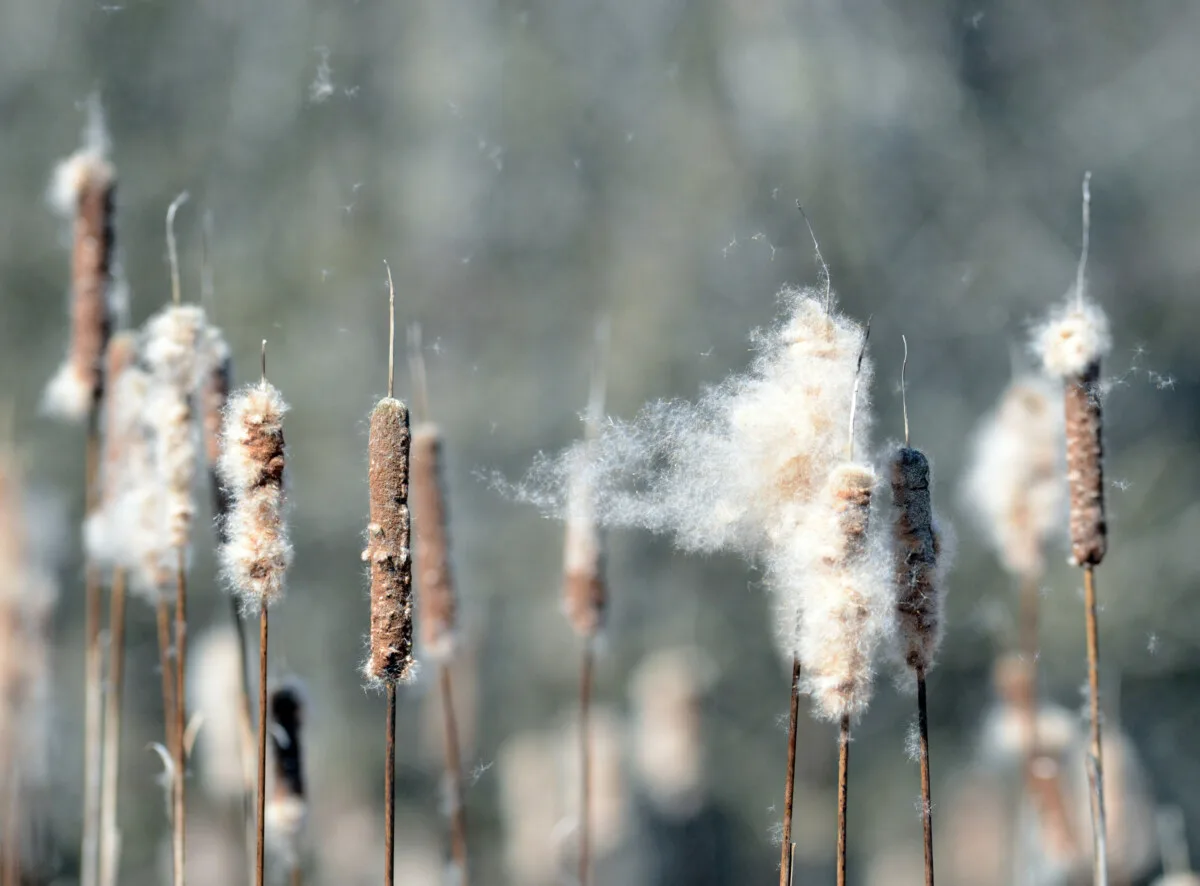
Break apart a mature brown cattail seedhead and inside you’ll find a soft and downy material. The outer brown casing protects the fluff from moisture, keeping it nice and dry, even in heavy rain.
When loosened from its shell and pulled apart, cattail down is delicate and airy stuff. It’s the perfect fire-starting material since it catches light quickly:
As a substitute for dry grass, wood shavings, newspaper, or dryer lint, cattail fluff is good tinder that burns fast and bright. Before your next fire, whether at the hearth or campsite, gather up some mature seedheads and store them alongside your firewood.
6. Tiki Torches
In a pinch, cattails flowerheads kept on the stalk can be lit and used like a torch to light the way at night.
For a longer lasting torch, first dip the cattails in oil or fat before setting them aflame. The oil will slow the burning process for bright, usable light that lasts for a few hours or more.
7. Mosquito Repellent
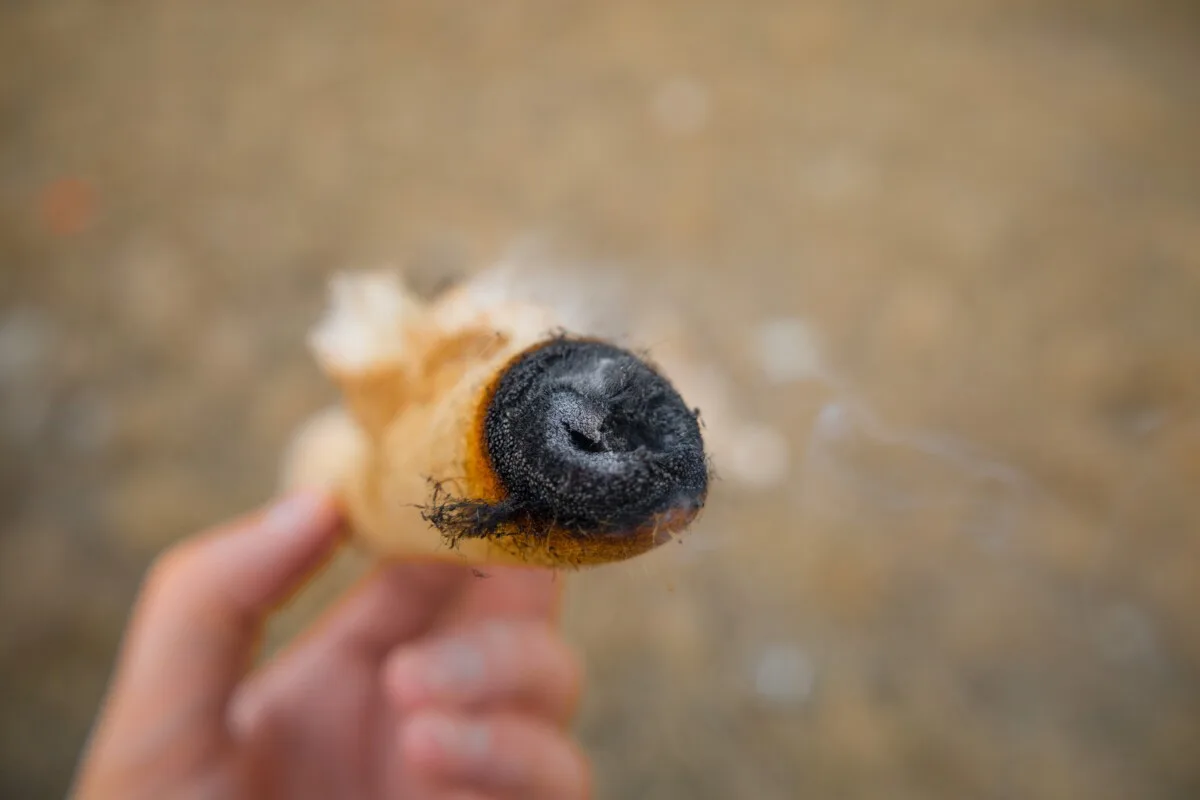
Smoking cattail flowerheads to keep flying pests away is a tradition that dates back hundreds of years, at least. The Lenape people used cattails for practically everything and showed this trick to the European settlers. In more recent times, “burning punks” was a thing people did up to the 90s to keep insects at bay.
To repel mosquitoes and bugs with the aromatic smoke of cattails, collect up a bunch let them dry out for a few days. Once brittle, stick the spikes in the ground and light up the tops. Blow out the flame and let it smoke and smolder, just like incense.
8. Cordage
Cattail plants can reach great heights at maturity, with leaves as long as 6 to 10 feet. These can be dried and twisted into sturdy cordage like twine and rope.
To gather cattail leaves, slice plants away at the base of the stem. The foliage grows vertically in an alternating spiral, and the leaves are removed by peeling them off from the main shoot.
To fashion a quick rope, collect the dry and brown outer leaves and twist them together:
For a stronger cord, the whitish outer edge of each leaf is peeled away and dried. Using the thigh rolling technique, the leaf strands are then spun into a finer twine:
Cattail cordage can be made into any thickness by braiding or twisting together three or more lengths of twine.
9. Emergency Shelter
In a survival situation, building a weatherproof shelter is the very first thing to do. If you happen to be near a stand of cattails, they can be used to insulate any lean-to or free-standing structure you build.
To make a dome shelter, collect long and flexible wood, about an inch thick. Driven into the ground in a circle, the tops of the branches are tied together to create the basic frame. More sticks are then woven into the structure, wattle-style, to strengthen the walls.
Cattail plants, cut at the base of the main stem, are collected in bunches and lined along the walls and top. Laid all over like thatch, two layers or more will provide protection against wind, rain, and snow.
10. First Aid
When nature is your apothecary, you’ll be glad to see cattails on the horizon! Like so many medicinal plants, cattails haven’t undergone the rigors of clinical study. However, the plant has a long history of use by indigenous people across the continent for aches, pains, and minor ailments. If that doesn’t speak to its efficacy, it does show a safe track record.
Cattails are like a basic first aid kit in the wild:
- The fluffy fibers of the seedhead are soft and absorbent. Use them to staunch bleeding and dress wounds. Like a band-aid, the cattail down will wick up moisture while allowing cuts, burns, and other injuries to breathe, keeping wounds clean and promoting overall healing.
- The cattail roots can be used to soothe bug bites, blisters, sunburns, and other skin irritations. Dig up the rhizome and mash it up to create a starchy salve.
- Cattail gel has a cooling and numbing effect on the skin and is used for quick pain relief. The clear sap is located toward the base of the stem, in between each leaf layer. Use it on the go or preserve it in a jar.
11. Stuffing Material
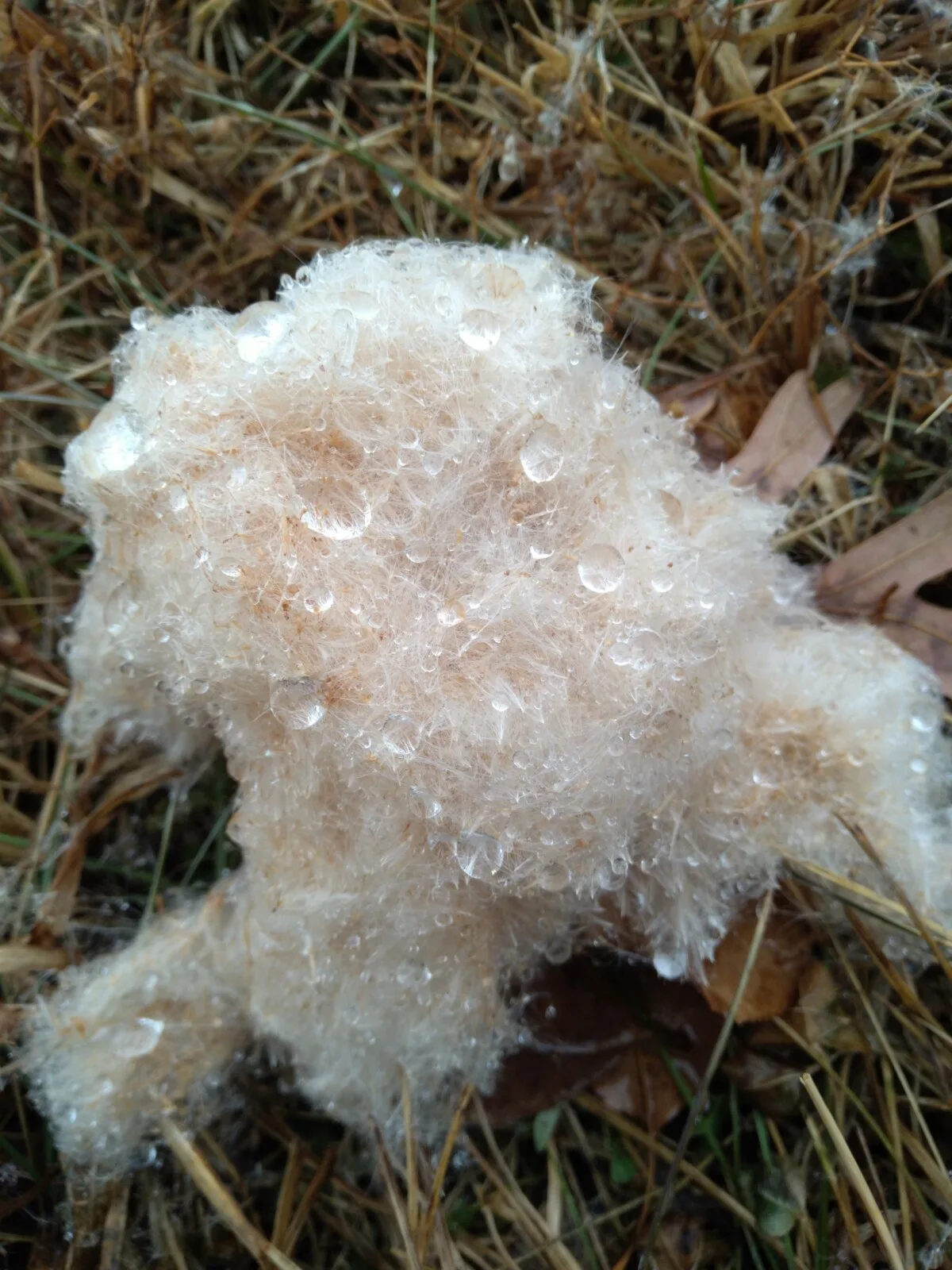
Cattail flowers are so unbelievably dense and tightly packed with fluff. Simply putting pressure on the casing causes them to spiral out in a majorly fluffy cascade:
As you can see, you’ll get much downy goodness from one cattail. The fluff is great as stuffing for pillows, quilts, and mattresses. Or anywhere else you’d like a little extra padding.
As we know, cattail down is flammable, but less so when it’s packed somewhat snugly. When using it as stuffing for bedding or clothing, pair it with a naturally fire-resistant outer fabric such as wool, hemp, leather, polyester, or nylon.
12. Down Insulation
Cattail fluff isn’t only soft and luxurious, it’s a natural insulator. The tiny white fibers trap air in the spaces between them, creating a thermal barrier against the cold.
A vegan, cruelty-free alternative to duck and goose down, cattail fluff is a sustainable and abundant material that’s free for the taking. It can be used as a downy filling for jackets, vests, duvets, and sleeping bags. The fluffy plant fibers are breathable, moisture-resistant, lightweight, and washable.
Cattail fluff can also be pressed into felt lining for mittens, slippers, and winter boots. This is accomplished by spreading the fluff evenly on a flat surface and pressing it into a fabric-like material with a rolling pin.
13. Cattail Weaving
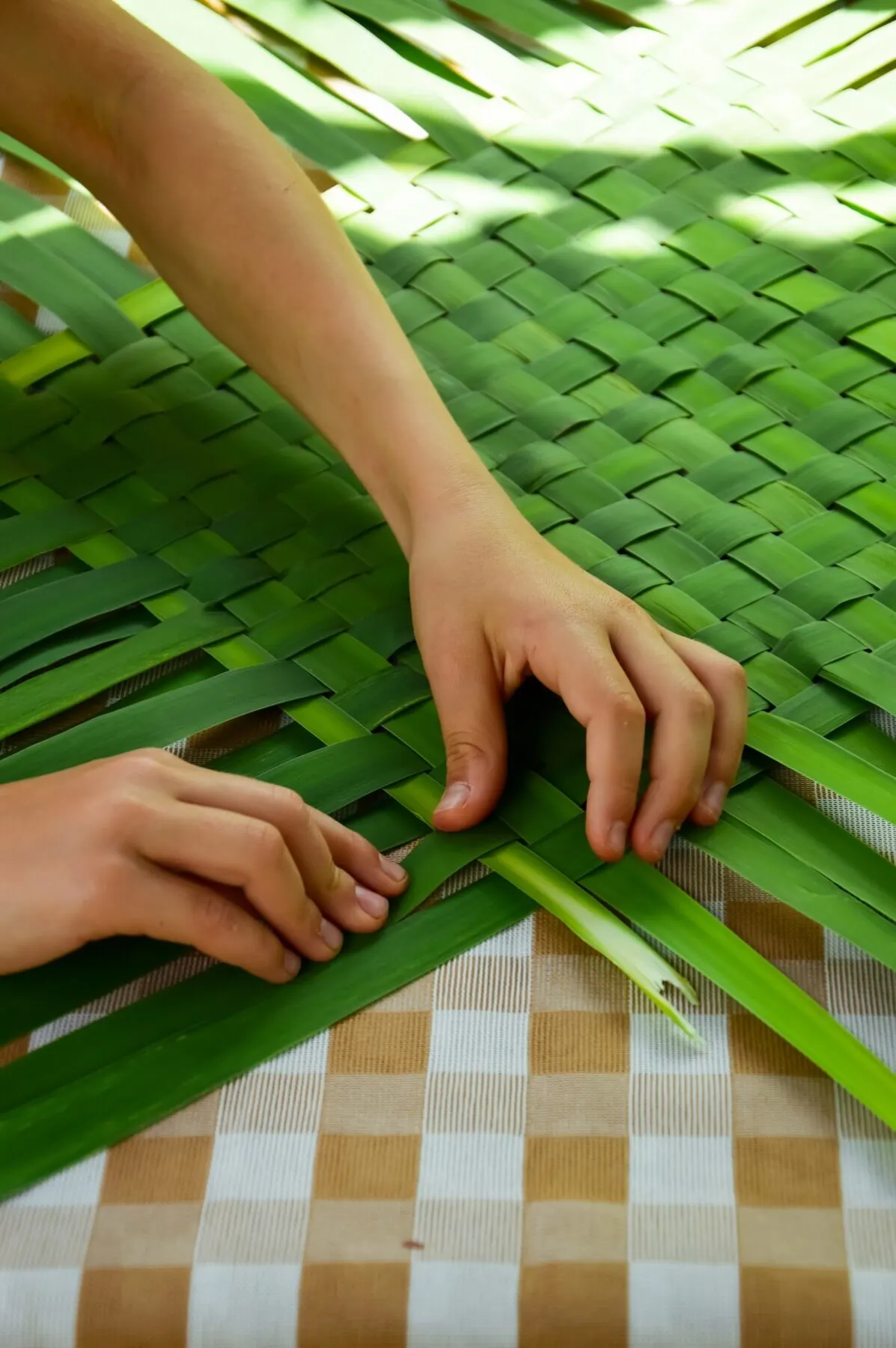
Cattails and other reedy marsh plants are among the oldest weaving materials, dating as far back as ancient Egypt. Long, flat, stiff, and pointy-tipped, the leaves of cattail can be crafted into all sorts of decorative and practical objects. Fading to a warm tan color when dry, cattail weaving produces goods that are both durable and attractive.
Harvest cattail leaves for weaving by snipping plants at the stem and letting them dry in a pile for about a week. When you’re ready to get weaving, moisten them slightly by wrapping the bundle in a damp towel. Re-wetting the leaves ensures they’ll be pliable and won’t snap in two when bent. Using leaves while they’re still fresh and green is fine too, but there’s a risk they will shrink as they dry, and leave gaps in your finished work.
Here’s how to make a wicker cattail basket:
Rugs and mats can be woven easily with the over-under-over technique:
You could even make a sun hat:
Traditionally, cattail leaves were woven to make fish traps, snow shoes, rush seat covers, bags and satchels, and river-worthy boats.
14. Cattail Flower Arrangements
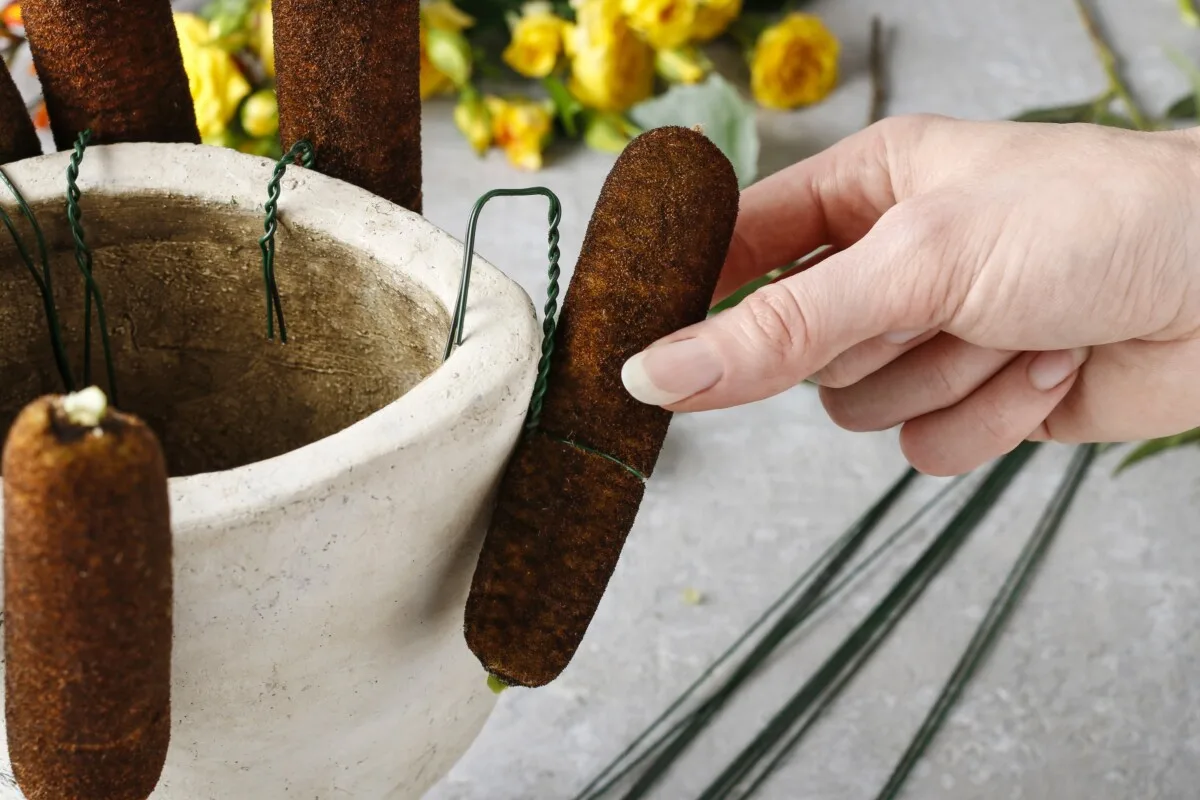
Say what you will about cattail’s velvety corndogs, no other flower produces blooms in quite the same way! This amazing plant and its unusual flowerheads can become the centerpiece in your next autumn flower arrangement.
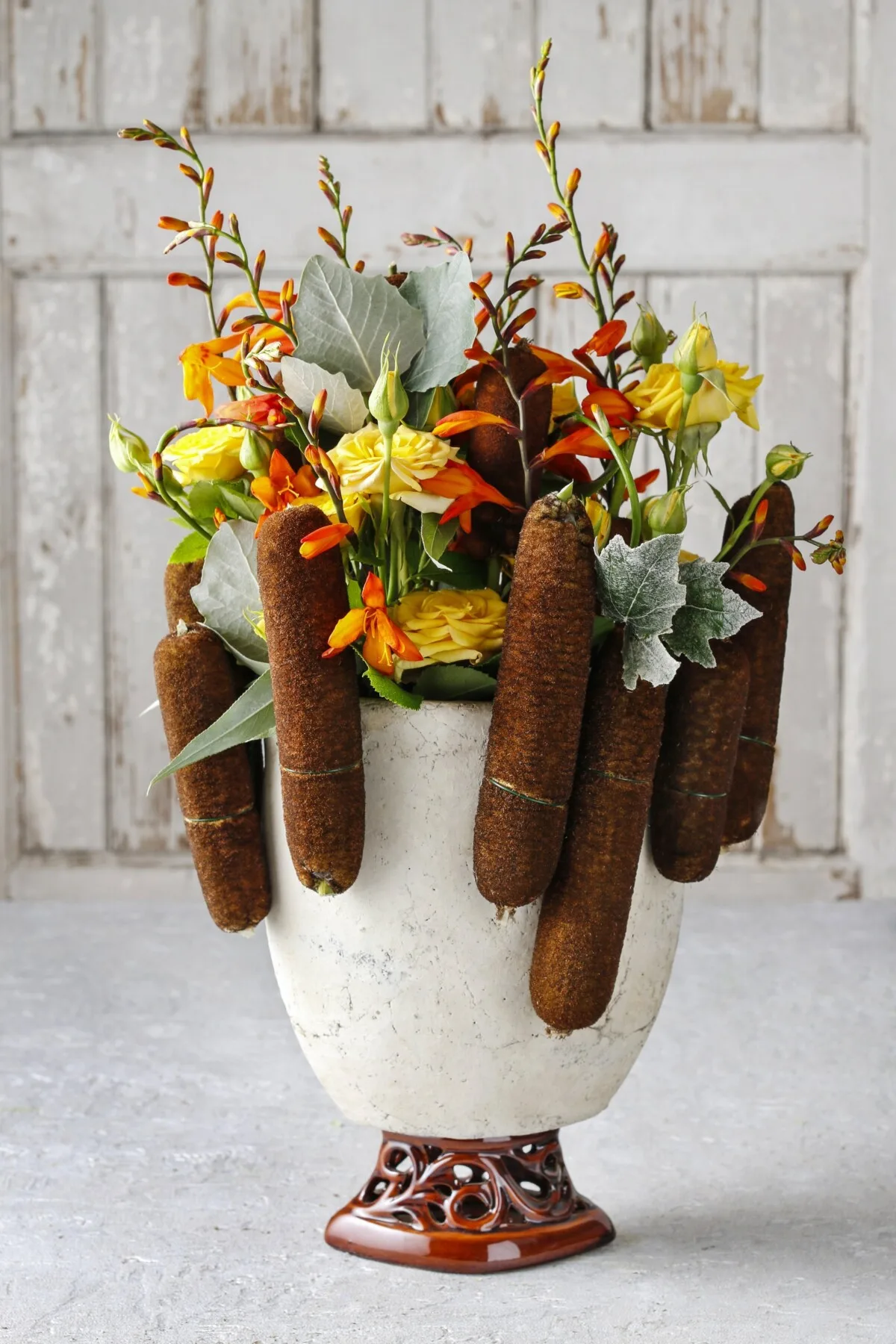
Pick cattails in late summer, when the brown flowerheads are firm but not yet bursting forth with fluff. Gather a dozen or so and hang them up to dry until the stems are brittle.
Here’s an example of one cattail arrangement with eucalyptus, bunny tail grass, and sunflowers:
Dried cattails are lovely in a vase, bouquet, or wreath alongside meadow flowers, birch twigs, chrysanthemums, and ornamental grasses.
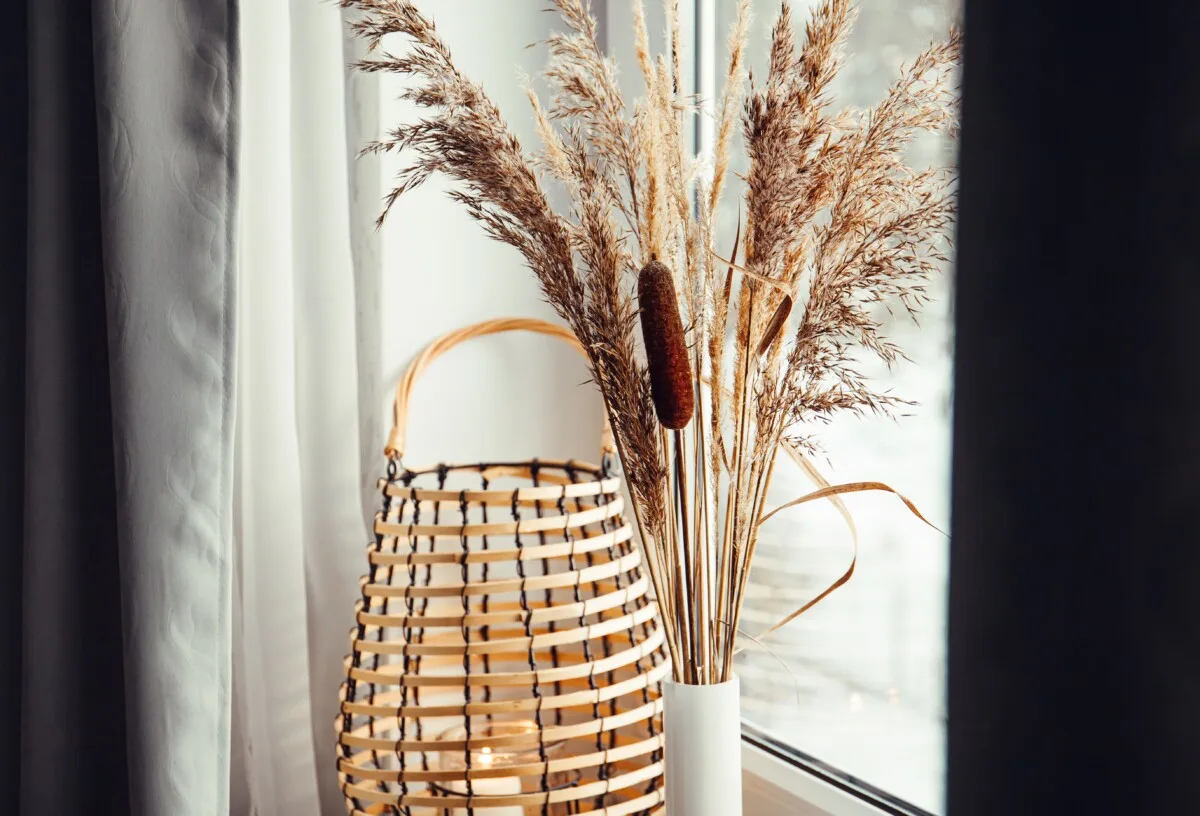
15. Cattail Dolls
With its roots in indigenous cultures, cattail dolls are a plant-based handicraft that creates a three-dimensional sculpture.
All you need to start is a bushel of dried cattail leaves. Here’s bushcraft legend Mors Kochanski – who popularized this ancient art form – to walk us through the steps of making the basic cattail doll shape.
With the body form constructed from cattail leaves, the doll is a blank canvas that may be embellished with other foraged plant materials. Add hair, tools, weapons, or wings, for instance, to create angels, warriors, archers, wood cutters, reapers, or hikers. There are hundreds of variations it can take and the cattail doll’s story is yours to imagine.

Get the famous Rural Sprout newsletter delivered to your inbox.
Including Sunday ramblings from our editor, Tracey, as well as “What’s Up Wednesday” our roundup of what’s in season and new article updates and alerts.

